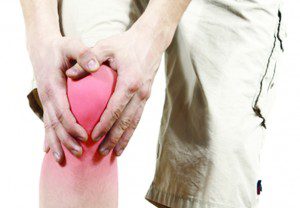Featuring Dr Jeremiah Joseph
Board Certified Chiropractic Neurologist
 According to the American Academy of Orthopedic Surgeons, 10.4 million patients have common knee injuries. The majority of these are ligament tears, sprains, fractures, or dislocations. These likely happen because the knee is the largest joint in the human body and is, therefore, the most prone to injury. Unlike other mammals, we only have two legs to stand on. When one or both become nonfunctional it spells trouble. Yet, physical trauma is not always the culprit in knee pain. Wear and tear from aging can also do the trick. The knee is a very complex joint with many parts that can weaken over time. Fortunately, for those resisting surgery, there is a new healing technique that is non-invasive and extremely natural. This new procedure is called Platelet Rich Plasma therapy (PRP).
According to the American Academy of Orthopedic Surgeons, 10.4 million patients have common knee injuries. The majority of these are ligament tears, sprains, fractures, or dislocations. These likely happen because the knee is the largest joint in the human body and is, therefore, the most prone to injury. Unlike other mammals, we only have two legs to stand on. When one or both become nonfunctional it spells trouble. Yet, physical trauma is not always the culprit in knee pain. Wear and tear from aging can also do the trick. The knee is a very complex joint with many parts that can weaken over time. Fortunately, for those resisting surgery, there is a new healing technique that is non-invasive and extremely natural. This new procedure is called Platelet Rich Plasma therapy (PRP).
Parts of the Knee:
There are three bones that make up the knee. The thigh bone (femur), shin bone (tibia), and knee cap (patella) come together to give us the mobility we need. High-energy trauma can cause fractures to any of these bones. While the patella is the most common to receive a fracture, any of the three may become dislocated just as easily.
In the center of the knee, there is tough cartilage called meniscus; this acts as a cushion for the large joint. If the knee pivots or twists wrong, there can be a tear. A sports injury or trauma may cause a meniscal tear, but age can play a part too. Any sudden twist of the knee for the elderly may mean risk of a meniscus injury.
Anytime bones connect to other bones, ligaments are in play. When muscles connect to bones, tendons are there to make the bond. Both are found in the knee. Middle-aged people are more apt to tear or place stress on these; mostly from running or strenuous exercises. A common injury in sports is the tearing of the anterior cruciate ligament, or ACL. If you are a football fan, you have probably heard of a running back with that one.
Details of Platelet Rich Plasma (PRP) Therapy:
Whether knee discomfort is a side effect from injury or strain, there are two options to choose from. Either allow the knee to heal naturally or undergo surgery to forcibly mend anything broken. Platelet rich plasma therapy sounds like surgery, but in actuality it is using the body to heal itself at a quicker pace. Pivitol Health is an expert in physical medicine and they explain how PRP Therapy uses components of a patient’s own blood to trigger healing. The simple process involves taking a sample of blood and spinning it real fast in order to separate the blood cells from the plasma. This creates a concentration of the platelets to be reinserted into the injured joint or area. They have found that the healing process is six to eight times faster than the normal rate. After injection, the body will react with a mild inflammatory response to increase the blood flow. From there, the body takes over the healing process. PRP is an excellent way to treat joint and tendon conditions, or “non-healing” wounds. This form of therapy substantially improves how knee pain is treated, with or without surgery.
There are many reasons why knee pain may be present and it is important to choose the best treatment for you or a loved-one. If you would like more information regarding knee pain or PRP Therapy, contact Pivitol Health in Port Charlotte at (941) 697-3001.









